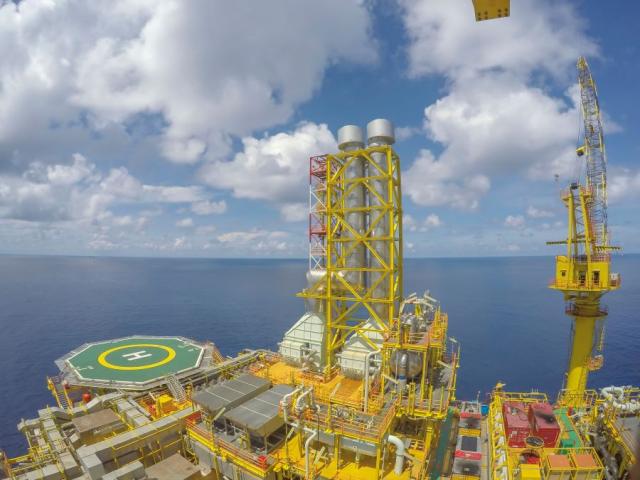
LLOG Exploration Offshore will be repurposing the Independence Hub in the U.S. Gulf of Mexico as a floating production system. (Source: Opsorman / Shutterstock.com)
Audubon Engineering Co. LP will support LLOG Exploration Offshore LLC's Salamanca floating production system (FPS) project in the U.S. Gulf of Mexico, according to a press release on Aug. 17.
Located in Block 689 of the Keathley Canyon, the FPS will be situated in a water depth of approximately 6,400 ft with the ability to tap the Leon and Castile discoveries. Once running, the platform will include facilities capable of processing 60,000 bbl/d of oil, 25,000 bbl/d of water and 40 MMscf/d of natural gas.
The engineering, construction, fabrication and technical services provider will supply LLOG with detailed design and procurement services, vendor equipment management, construction, pre-commissioning and offshore commissioning support throughout the duration of the agreement.
Initial production is expected to begin in mid-2025.
“Our history of partnership with LLOG goes back to 2006. As LLOG has grown from inshore facilities to offshore shelf to deepwater facilities, Audubon has grown with it,” Aubudon president Ryan Hanemann commented in the release.
“We are excited about the opportunity to extend Audubon’s growth in offshore service delivery while helping LLOG achieve its mission of safely exploring and producing energy from the deepwater Gulf of Mexico.”
Prior to production, LLOG will obtain ABS A1 notation for the platform to comply with CG-ENG Policy Letter No. 01-13, Alternate Design and Equipment Standard for Floating Offshore Installations, the release stated.
As acting project manager for the Salamanca FPS, LLOG will repurpose the existing Independence Hub rather than build a new facility – the first time an operator will have accomplished this feat in the Gulf of Mexico.
During the renovation, the hull, topside truss, cranes, and lifeboats will be reused with minor modifications, while all other topside equipment will be new and fit-for-purpose, according to the release.
Using the existing infrastructure will have a positive ESG impact on the company; the project is also anticipated to reduce emissions by about 70% compared to the construction of a new unit.
Recommended Reading
Texas LNG Export Plant Signs Additional Offtake Deal With EQT
2024-04-23 - Glenfarne Group LLC's proposed Texas LNG export plant in Brownsville has signed an additional tolling agreement with EQT Corp. to provide natural gas liquefaction services of an additional 1.5 mtpa over 20 years.
US Refiners to Face Tighter Heavy Spreads this Summer TPH
2024-04-22 - Tudor, Pickering, Holt and Co. (TPH) expects fairly tight heavy crude discounts in the U.S. this summer and beyond owing to lower imports of Canadian, Mexican and Venezuelan crudes.
What's Affecting Oil Prices This Week? (April 22, 2024)
2024-04-22 - Stratas Advisors predict that despite geopolitical tensions, the oil supply will not be disrupted, even with the U.S. House of Representatives inserting sanctions on Iran’s oil exports.
Association: Monthly Texas Upstream Jobs Show Most Growth in Decade
2024-04-22 - Since the COVID-19 pandemic, the oil and gas industry has added 39,500 upstream jobs in Texas, with take home pay averaging $124,000 in 2023.
Shipping Industry Urges UN to Protect Vessels After Iran Seizure
2024-04-19 - Merchant ships and seafarers are increasingly in peril at sea as attacks escalate in the Middle East.



